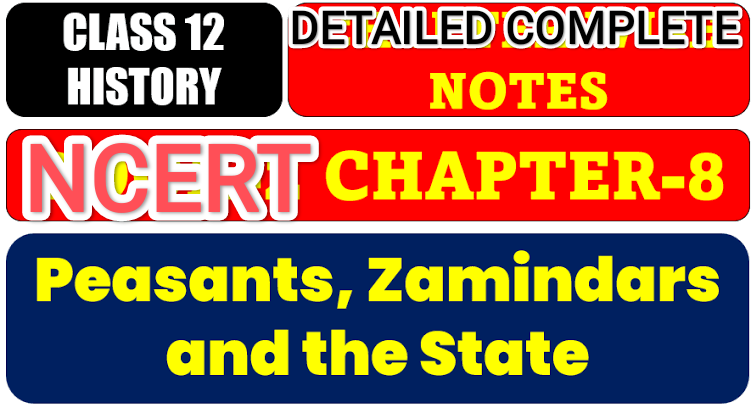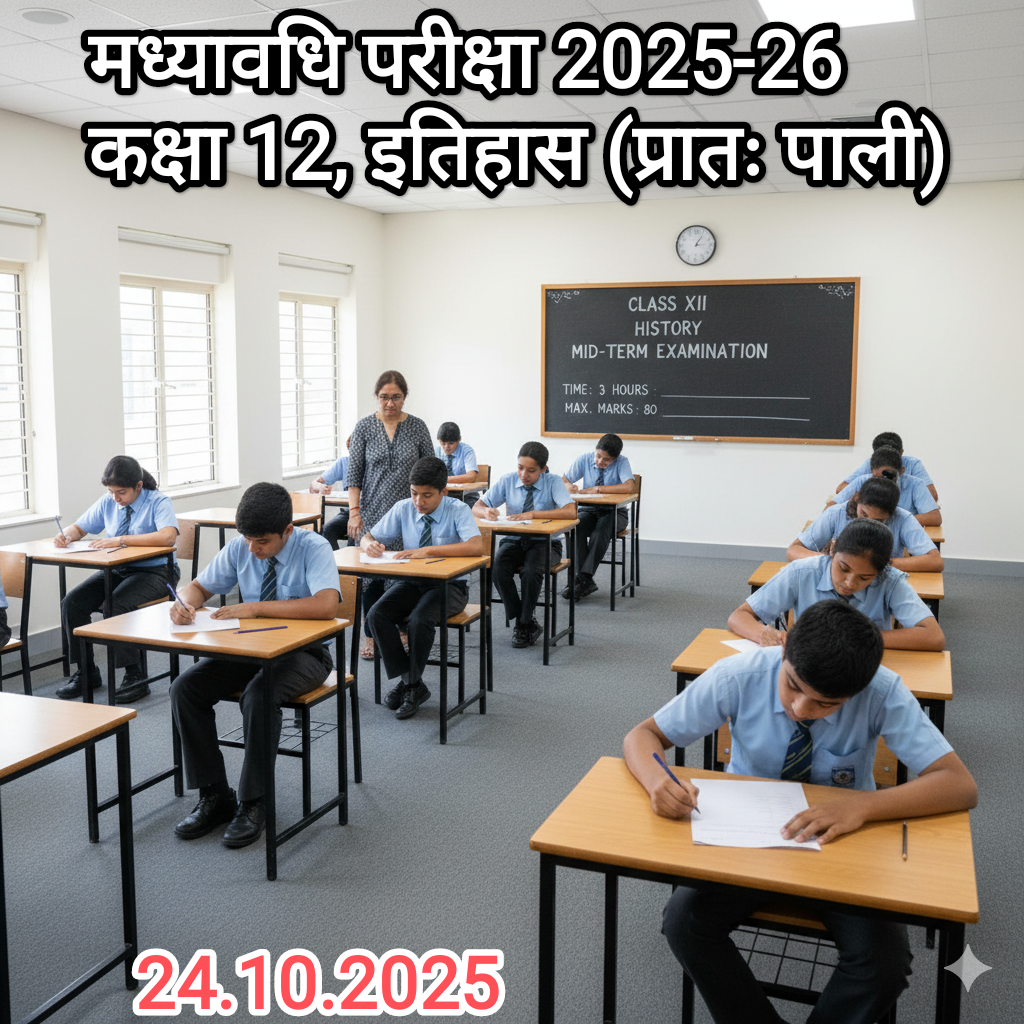Why this chapter matters (CBSE angle)
- Always asked: Ain-i Akbari (Abu’l Fazl) as source, Todar Mal’s revenue system, zabt/batai, Nayab terms (raiyat, khudkashta, pahi-kashta), zamindars’ role, village panchayat, crops & irrigation, commercialization of agriculture, madad-i-maash, forest/pastoral groups, and peasant/ zamindar revolts (Jats, Satnamis, Sikhs).
1) Sources & How We Know (Historiography)
- Ain-i Akbari (1590s, by Abu’l Fazl):
- Lists administration, revenue rules, measurement standards, crop calendars, prices, units, and social groups.
- Treats the emperor as the pivot of order and prosperity.
- Persian chronicles (Baburnama, Akbarnama, Shahjahanama, etc.): court-centred but rich on policy and campaigns.
- Revenue records: jama (assessed demand) vs hasil (actual collection), village registers, pargana summaries.
- European accounts: traders & missionaries (prices, coins, commodities).
- Archaeology & environmental clues: tanks, canals, settlement patterns; pollen & charcoal for crop/forest history.
- Inscriptions & grants: madad-i-maash/inam (revenue-free grants to learned/religious persons).
2) The Agro-Ecology: Land, Seasons, Crops, Tools
- Seasons:
- Kharif (monsoon sowing, autumn harvest): rice, millets (jowar/bajra), cotton.
- Rabi (winter sowing, spring harvest): wheat, barley, peas, gram.
- Zaid (short summer crops in irrigated tracts): vegetables, melons, cucurbits.
- Crops (by type):
- Staples: rice (east/coastal), wheat & barley (north), millets (semi-arid).
- Cash crops: cotton, sugarcane, indigo, opium, tobacco (17th c. spread), arecanut, pepper (south-west).
- Fodder & oilseeds: mustard, sesame, linseed—vital for diet and crafts.
- Technology & inputs:
- Wood/iron plough, seed drills in some zones, manure, crop rotation.
- Irrigation: wells (rahat/Persian wheel), stepwells, tanks & bunds, river canals.
- State and local elites funded desilting, canal digging, embankments.
- Land categories (Ain):
- Polaj (annually cultivated), Parauti/Parati (1–2 years fallow), Chachar (3–4 years fallow), Banjar (long fallow/uncultivated).
- Better class land = higher assessment.
3) Rural Society: Who lived and worked the land
- Raiyat (peasant cultivators): the backbone of the economy.
- Khudkashta = resident peasants (stable, better terms).
- Pahi-kashta = migrant/outsider peasants (shifting for better rents or escaping dues).
- Artisans & service groups: carpenters, blacksmiths, potters, weavers, oil-pressers, barbers, washermen—often tied by customary service (jajmani-like) obligations; paid partly in grain/cash.
- Pastoral & forest people: grazed cattle, practiced shifting cultivation, collected forest produce; pushed into settled agriculture over time as the state sought more revenue land.
4) Village Institutions: Panchayat & Caste Panchayat
- Village Panchayat:
- Headed by muqaddam/headman; includes elders from lineages/castes.
- Functions: settle disputes, manage commons (grazing/water), enforce boundaries, collect dues, maintain paths/embankments.
- Could fine offenders; often acted as a court of first resort.
- Caste Panchayat:
- Looked after marriage, inheritance, occupational rules, social discipline within a caste.
- Enforced by social boycott/fines.
5) Zamindars: Who they were & what they did
- Who? A wide spectrum: powerful lineage chiefs (Rajput, Maratha, etc.), old local intermediaries, even prosperous peasant headmen (chaudhuris).
- Rights & claims:
- Customary share in produce (not ownership of all land), police/judicial authority in their estate, ability to mobilize armed retainers.
- Held forts, controlled markets & ferries, patronized temples/mosques.
- Received perquisites (nankar, nazrana), maintained status through charity & feasts.
- As brokers: mediated between state and village, crucial for revenue, labour mobilization, and peace.
- Tension & revolt: when extraction rose or rights were curbed, zamindars rebelled (e.g., Jats, Satnamis; Sikhs later assertive in Punjab).
6) The State & Revenue: How the Mughal system worked
- Goal: stable, predictable revenue in cash/kind without destroying cultivation.
- Key officials & units:
- Patwari (village accountant), qanungo (pargana record-keeper), amus/amil (collector), faujdar (military/peace), qazi (judicial).
- Administrative tiers: village → pargana → sarkar → suba.
- Assessment & collection:
- Jama = assessed demand; hasil = actual realized amount.
- Zabt (measurement) areas: fields measured with standardized jarib (bamboo rope with iron rings); bigha standardized under Akbar; prices averaged.
- Dahsala (Todar Mal): 10-year average yields & prices to fix cash demand; aim = stability.
- Share systems (batai/khet-batai/galla-bakshi): a set fraction of actual crop.
- Kankut/Nasaq: estimation/rough assessment when measurement hard.
- State demand typically about one-third of produce (could vary by region/crop).
- Payment & monetization:
- Increasing cash collection due to silver inflow and expanding trade; but kind persisted where markets were thin.
- Hundi/credit used by merchants & revenue officials to move money safely.
- Jagir-mansab system (link with revenue):
- Mansabdars (rank-holders) assigned jagirs (revenue rights in specific areas) to fund their pay & troops.
- Khalisa lands reserved for the imperial treasury.
- Frequent transfers to prevent local entrenchment; but jagir-zamindar-raiyat triangle could get exploitative if demands rose.
7) Irrigation & Rural Technology
- Wells with Persian wheel (rahat/saqiya), leather buckets & oxen—common in Ganga-Yamuna Doab.
- Tanks & bunds (especially in Deccan & south): community/state sponsored; temples often managed water bodies.
- Canals maintained/extended in the Mughal period (e.g., Punjab canals under imperial nobles).
- Agrarian risk-management: crop diversification, inter-cropping, and fallows reduced risk from droughts/floods.
8) Commercialization of Agriculture
- Rising urban demand (imperial capitals, military cantonments) + overseas trade = push towards cash crops.
- Cotton, indigo, sugarcane, opium, tobacco expanded in different belts.
- Banjaras (itinerant grain-carriers) moved massive quantities; mandis grew along highways & river ports.
- Crafts linked to agriculture (oil pressing, jaggery making, textiles) thrived.
9) Women in the Agrarian World
- Work: sowing, weeding, winnowing, grinding, dairying, gleaning; spinning (cotton) fed the textile economy.
- Property & rights: Stridhan recognized; customary shares in house/land varied by region & community; widows could hold limited rights, often under guardianship.
- Panchayat & norms: Caste/village rules shaped marriage, inheritance, dress, mobility—women negotiated within these boundaries.
10) Forests, Pastoralists & The State
- Forest groups (Bhils, Gonds, Paharias, etc.) practiced shifting cultivation, hunting, gathering, and crafts (charcoal, lac, honey).
- The state sought to settle and tax: clearance of forests to expand polaj land; granting madad-i-maash in frontier zones to attract cultivation.
- Pastoralists grazed herds on commons and fallows; conflicts rose when commons shrank.
11) Conflict, Resistance & Negotiation
- Everyday resistance: under-reporting harvest, delaying payments, flight to another zamindar, petty litigation.
- Open revolts:
- Jats in the Agra-Mathura belt (late 17th c.)—tax pressure + local autonomy.
- Satnamis (Haryana, 1672) clashed with Mughal officials.
- Sikhs in Punjab grew politically assertive under later Gurus.
- Outcomes varied: temporary remissions, change of officials, or harsh suppression.
- Key idea: the agrarian order was negotiated, not just imposed.
12) Key Terms (learn these “as is”)
- Raiyat: peasant/cultivator
- Khudkashta / Pahi-kashta: resident / migrant peasant
- Jama / Hasil: assessed demand / actual collection
- Zabt: measured assessment system
- Batai / Khet-batai / Galla-bakshi: crop-share systems
- Kankut / Nasaq: estimate assessment methods
- Polaj, Parauti, Chachar, Banjar: cultivation/fallow categories
- Jagir / Khalisa: revenue assignment / crown land
- Mansabdar: rank-holder; maintained cavalry as per rank
- Madad-i-maash/Inam: revenue-free grants for learning/religion
- Qanungo / Patwari / Amil: record-keeper / village accountant / collector
- Rahat (Persian wheel): irrigation device
- Banjara: itinerant grain & goods carrier
13) Chapter Takeaways (exam voice, crisp)
- Mughal agrarian society was diverse, monetizing, yet rooted in custom.
- State extraction relied on standardized measurement, price averages, and share systems to reduce arbitrariness.
- Zamindars were intermediaries with teeth—customary rights + muscle + ritual status.
- Agriculture + trade were interlocked; urban demand and overseas markets shaped cropping patterns.
- Panchayats & caste bodies maintained order but also protected local interests.
- Forests & pastoralists were pulled into the agrarian grid, sometimes peacefully, often contentiously.
- Resistance—from silent evasion to armed revolt—shows the system’s limits and constant negotiations.
14) Quick Revision Sheet (last-minute)
- Source: Ain-i Akbari (Abu’l Fazl) → crops, prices, measures, revenue rules.
- Revenue: jama vs hasil; zabt (measurement), dahsala (10-yr average), batai/kankut/nasaq.
- People: raiyat (khudkashta/pahi-kashta), artisans, service castes, zamindars.
- Institutions: village panchayat (muqaddam), caste panchayat, patwari, qanungo.
- Crops: kharif (rice/millets/cotton), rabi (wheat/barley/gram), cash (cotton/indigo/sugarcane/opium/tobacco).
- Irrigation: wells (rahat), tanks, canals; fallow classes (polaj→banjar).
- Trade: banjaras, hundi, mandis; growing cash payments.
- Grants: madad-i-maash/inam; frontier expansion.
- Conflict: Jats, Satnamis, Sikh assertion—when demands rose or rights curbed.
How to use these notes (exam strategy)
- For 3-markers: define key terms exactly + one example.
- For 6/8-markers: organize by sub-headings (Source → System → Society → Impact) and give regional examples + a line on limits/variations.
- Drop Ain-i Akbari/Todar Mal wherever relevant—examiners love that.







